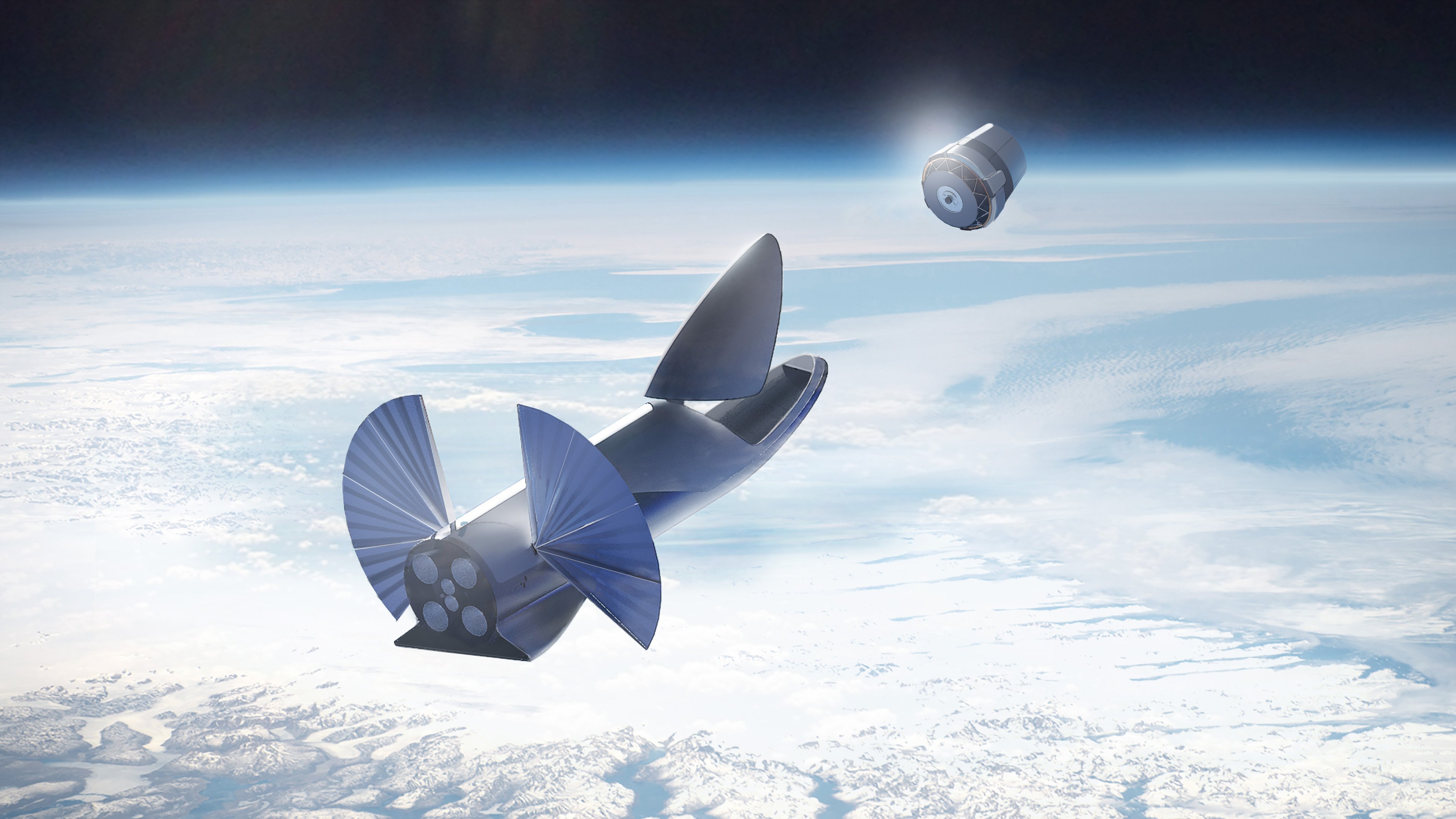

News
US Air Force issues RFP for massive rockets, SpaceX’s BFR could be one of them
The US Air Force has released a Request For Proposal (RFP) that hopes to fund the development of multiple heavy-lift rocket prototypes to launch no later than 2021. The USAF specified on October 5 that it wants to partially fund prototype development for at least three promising US-sourced launch vehicles, while maintaining the options to select none of the proposals or even more than three. The purpose of these broad strokes is to provide the Air Force and US military in general redundant access to space by way of “at least two domestic…launch service providers” capable of meeting National Security Space (NSS) requirements.
However unlikely it may seem, NASA experienced this firsthand when two of the vehicles it funded, SpaceX’s Falcon 9 and Orbital-ATK’s Antares, experienced complete failures within less than a year of each other. Both vehicle failures destroyed supplies intended for the International Space Station and forced NASA to rely on Soyuz missions to fill the gaps created while producing considerable uncertainty for the agency. By funding two or more independent launch vehicles, the Air Force would lessen the impact of such failures, and this assured access is rightly perceived as an invaluable commodity in the military.
- .While SpaceX’s own visualizations are gorgeous and thrilling in their own rights, Romax’s interpretation adds an unparalleled level of shock and awe. (SpaceX)
- A render of Blue Origin’s larger New Glenn vehicle. (Blue Origin)
- The only current render of OATK’s Next Generation Launcher. (OATK)
Several details in the latest proposal make it relatively easy to name the obvious prospective applicants. The payload requirements necessitate heavy lift or even super-heavy lift launch vehicles capable of placing anywhere from 5,000 to 37,500 pounds into a variety of Earth orbits, ranging from low Earth orbit (~500 mi) to direct transfer geostationary orbits (~19,200 mi). This narrows the field considerably, pushing out all smaller-scale vehicles. Also telling is a requirement that proposed launch vehicles make use of rocket propulsion systems (RPS) already funded for development by the USAF if at all possible.
Considering the inherently complex and difficult process of developing massive rockets, initial launch dates no later than 2021 (or 2024) likely mean that the vehicles being considered must already be under some level of serious development. This leaves us with four possible options in the US, undoubtedly not a coincidence given the RFP’s explicit goal of facilitating the creation of “at least three…prototypes as early as possible” and “at least two domestic…launch service providers”. These four vehicles are SpaceX’s BFR, Blue Origin’s New Glenn, ULA’s Vulcan, and Orbital-ATK’s NGL, all of which already have tentative inaugural launch dates clustered from 2019 to 2022. Perhaps even more revealing, all four vehicles can be expected to utilize several rocket propulsion systems (rocket engines) already funded by the Air Force, namely SpaceX’s Raptor, Blue Origin’s BE-4 and BE-3U, and Aerojet-Rocketdyne’s AR-1.
While the development of BE-4 and AR-1 have been somewhat veiled, SpaceX’s Raptor engine has publicly made a great deal of progress. As discussed during Elon Musk’s IAC 2017 presentation, the company has conducted an array of successful tests with its subscale Raptor program, to the tune of 42 individual hot-fire tests totaling more than 1,200 seconds. Musk also reported that the only thing preventing tests longer than 100 seconds was the size of the propellant tanks at the test stand, a genuinely impressive accomplishment if true. The sticking point, however, is how much difficulty SpaceX will have as they transfer to full-scale Raptor testing. The subscale Raptors being tested have a reported thrust of 1,000 kN, whereas the new full-scale thrust targets for BFR have settled on 1,700-1,900 kN, considerably smaller than the 3,000 kN figure from 2016 but still nearly a factor of two larger than the test articles SpaceX has had success with. In fact, educated speculation from SpaceX fans suggest that the operational Raptor as shown in 2017 may only need to be about 15% larger than the current test article(s). The pressure the full-size engine operates at will be considerably higher, so SpaceX’s work is not done by any means, but the company’s next-gen rocket propulsion system is arguably far closer to completion than any of its competitors’ offerings.
- SpaceX’s subscale Raptor engine has completed more than 1200 seconds of testing in less than two years. (SpaceX)
- A subscale version of BE-4 testing staged combustion and nozzle technology. (Blue Origin)
- Aerojet-Rocketdyne’s AR-1 preburner conducted its first successful test earlier this year. (AR)
As far as we are publicly aware, SpaceX’s subscale Raptor testing has yet to result in a major failure and has largely been a great success. Blue Origin’s BE-4 is known to have experienced at least one critical failure during hot-fire testing, while AR-1 has not yet begun full engine tests but is well into concrete hardware testing. Blue Origin’ s BE-4 engine and its New Glenn rocket are currently expected to fly for the first time before 2020, with AR’s NGL tentatively planning for a 2021 inaugural flight, assuming the company chooses to continue pursuing its development.
SpaceX has not yet specified when BFR or BFS will first take flight. Raptor is likely to begin full-scale testing relatively soon, and Musk revealed that SpaceX was aiming to begin construction of the first BFR as early as Q2 of 2018. It’s quickly starting to look like the U.S. is about to enter a sort of modern commercial space race and regardless of the outcome, the next several months and years are bound to be tense and exciting for SpaceX, Blue Origin, and the established incumbents as they battle for both public and private contracts.
Elon Musk
Tesla investors will be shocked by Jim Cramer’s latest assessment
Jim Cramer is now speaking positively about Tesla, especially in terms of its Robotaxi performance and its perception as a company.
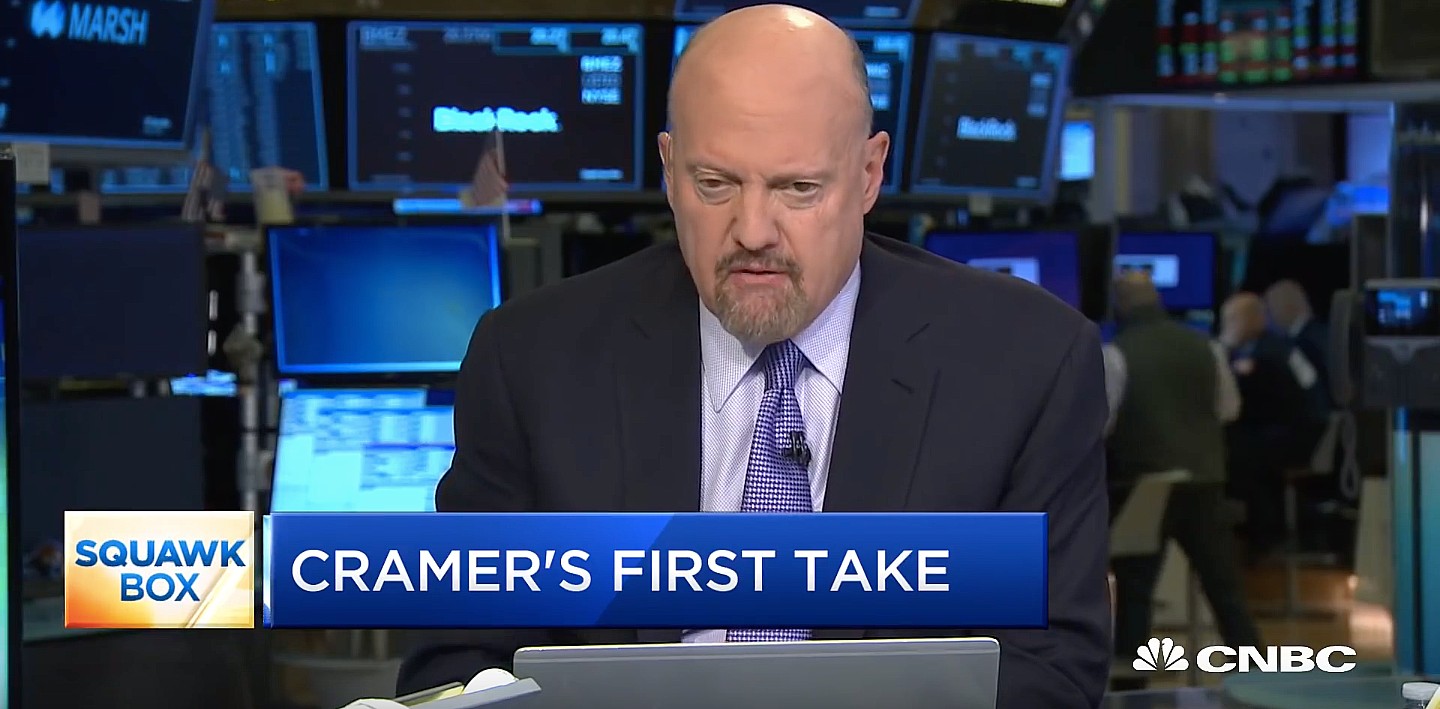
Tesla investors will be shocked by analyst Jim Cramer’s latest assessment of the company.
When it comes to Tesla analysts, many of them are consistent. The bulls usually stay the bulls, and the bears usually stay the bears. The notable analysts on each side are Dan Ives and Adam Jonas for the bulls, and Gordon Johnson for the bears.
Jim Cramer is one analyst who does not necessarily fit this mold. Cramer, who hosts CNBC’s Mad Money, has switched his opinion on Tesla stock (NASDAQ: TSLA) many times.
He has been bullish, like he was when he said the stock was a “sleeping giant” two years ago, and he has been bearish, like he was when he said there was “nothing magnificent” about the company just a few months ago.
Now, he is back to being a bull.
Cramer’s comments were related to two key points: how NVIDIA CEO Jensen Huang describes Tesla after working closely with the Company through their transactions, and how it is not a car company, as well as the recent launch of the Robotaxi fleet.
Jensen Huang’s Tesla Narrative
Cramer says that the narrative on quarterly and annual deliveries is overblown, and those who continue to worry about Tesla’s performance on that metric are misled.
“It’s not a car company,” he said.
He went on to say that people like Huang speak highly of Tesla, and that should be enough to deter any true skepticism:
“I believe what Musk says cause Musk is working with Jensen and Jensen’s telling me what’s happening on the other side is pretty amazing.”
Tesla self-driving development gets huge compliment from NVIDIA CEO
Robotaxi Launch
Many media outlets are being extremely negative regarding the early rollout of Tesla’s Robotaxi platform in Austin, Texas.
There have been a handful of small issues, but nothing significant. Cramer says that humans make mistakes in vehicles too, yet, when Tesla’s test phase of the Robotaxi does it, it’s front page news and needs to be magnified.
He said:
“Look, I mean, drivers make mistakes all the time. Why should we hold Tesla to a standard where there can be no mistakes?”
It’s refreshing to hear Cramer speak logically about the Robotaxi fleet, as Tesla has taken every measure to ensure there are no mishaps. There are safety monitors in the passenger seat, and the area of travel is limited, confined to a small number of people.
Tesla is still improving and hopes to remove teleoperators and safety monitors slowly, as CEO Elon Musk said more freedom could be granted within one or two months.
News
Tesla launches ultra-fast V4 Superchargers in China for the first time
Tesla has V4 Superchargers rolling out in China for the first time.
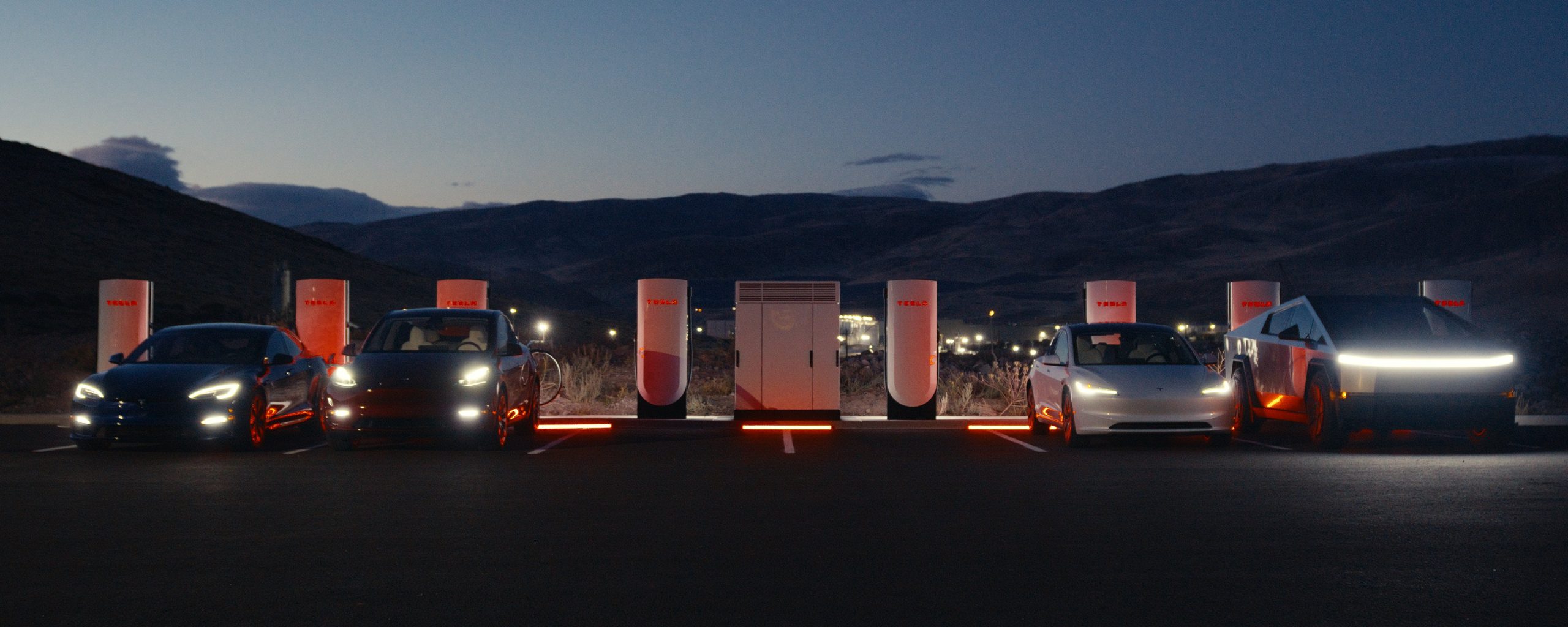
Tesla already has nearly 12,000 Supercharger piles across mainland China. However, the company just initiated the rollout of the ultra-fast V4 Superchargers in China for the first time, bringing its quick-charging piles to the country for the first time since their launch last year.
The first batch of V4 Superchargers is now officially up and running in China, the company announced in a post on Chinese social media outlet Weibo today.
The company said in the post:
“The first batch of Tesla V4 Superchargers are online. Covering more service areas, high-speed charging is more convenient, and six-layer powerful protection such as rain and waterproof makes charging very safe. Simultaneously open to non-Tesla vehicles, and other brands of vehicles can also be charged. There are more than 70,000 Tesla Superchargers worldwide. The charging network layout covers 100% of the provincial capitals and municipalities in mainland China. More V4 Superchargers will be put into use across the country. Optimize the charging experience and improve energy replenishment efficiency. Tesla will accompany you to the mountains, rivers, lakes, and seas with pure electricity!”
The first V4 Superchargers Tesla installed in China are available in four cities across the country: Shanghai, Zhejiang, Gansu, and Chongqing.
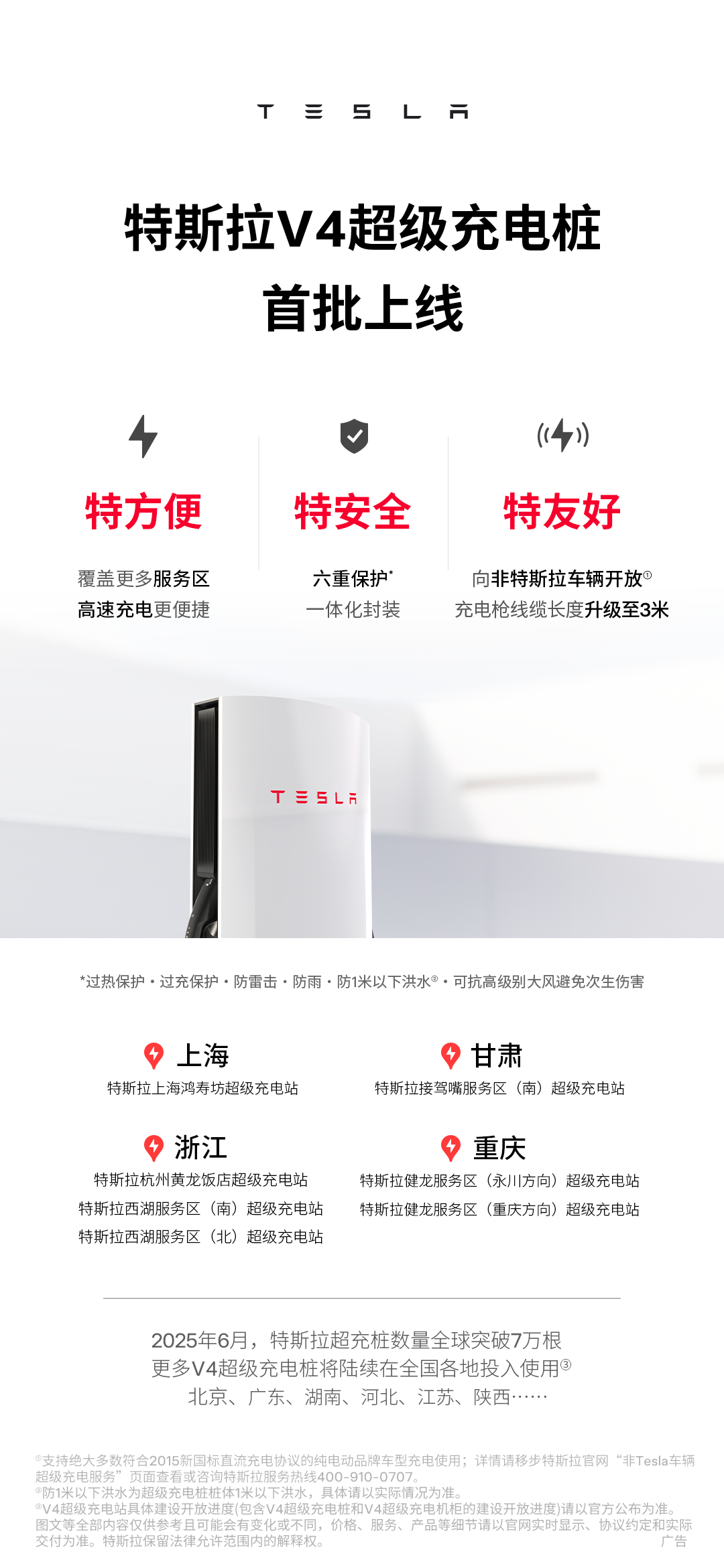
Credit: Tesla China
Tesla has over 70,000 Superchargers worldwide. It is the most expansive and robust EV charging network in the world. It’s the main reason why so many companies have chosen to adopt Tesla’s charging connector in North America and Europe.
In China, some EVs can use Tesla Superchargers as well.
The V4 Supercharger is capable of charging vehicles at speeds of up to 325kW for vehicles in North America. This equates to over 1,000 miles per hour of charging.
Elon Musk
Elon Musk hints at when Tesla could reduce Safety Monitors from Robotaxi
Tesla could be reducing Safety Monitors from Robotaxi within ‘a month or two,’ CEO Elon Musk says.
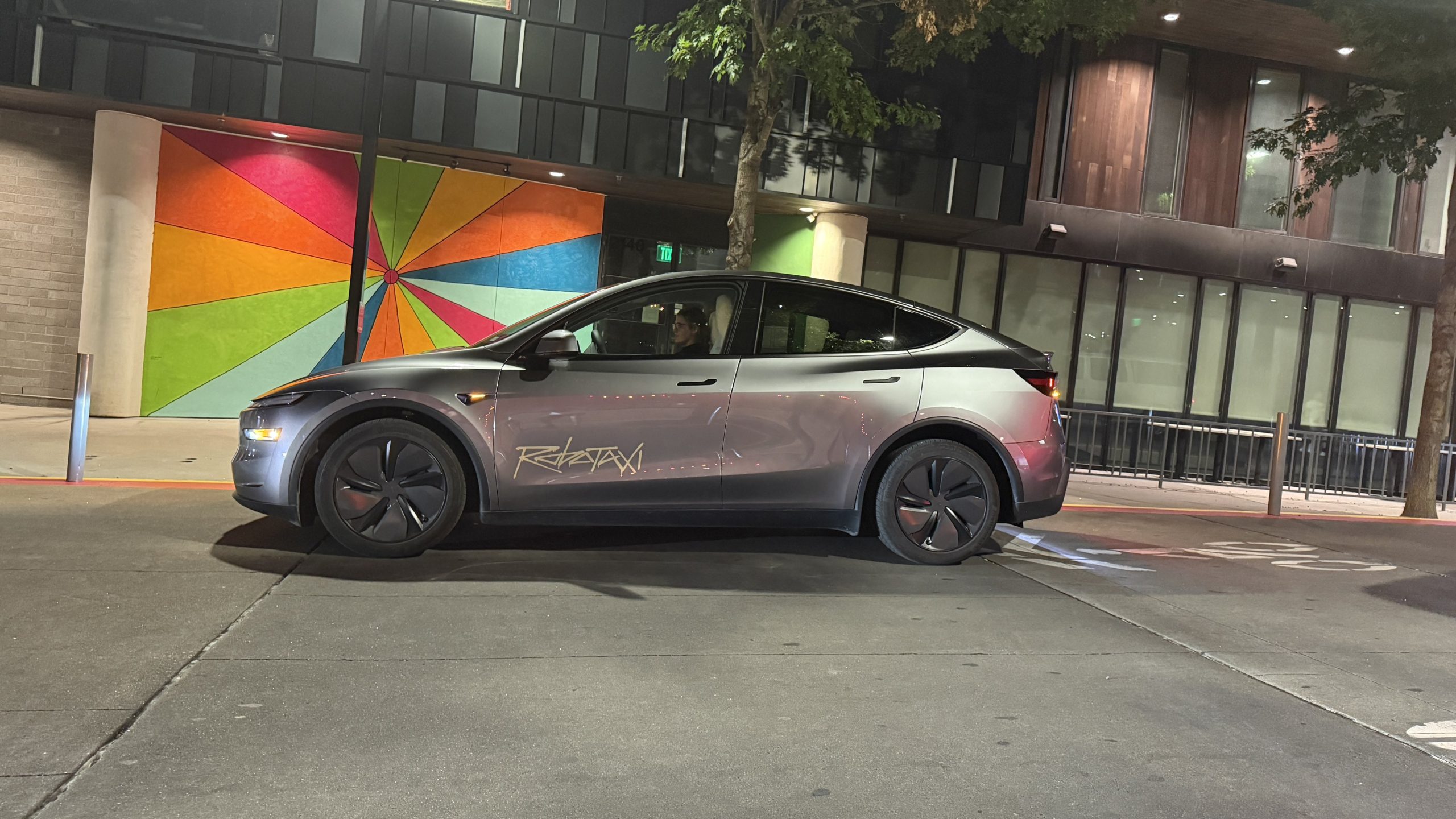
Elon Musk hinted at when Tesla could begin reducing Safety Monitors from its Robotaxis. Safety Monitors are Tesla employees who sit in the front passenger seat during the driverless rides, and are there to ensure safety for occupants during the earliest rides.
Tesla launched its Robotaxi fleet in Austin last Sunday, and after eight days, videos and reviews from those who have ridden in the driverless vehicles have shown that the suite is safe, accurate, and well coordinated. However, there have been a few hiccups, but nothing that has put anyone’s safety in danger.
A vast majority — close to all of the rides — at least according to those who have ridden in the Robotaxi, have been performed without any real need for human intervention. We reported on what was the first intervention last week, as a Safety Monitor had to step in and stop the vehicle in a strange interaction with a UPS truck.
Watch the first true Tesla Robotaxi intervention by safety monitor
The Tesla and UPS delivery truck were going for the same street parking space, and the Tesla began to turn into it. The UPS driver parallel parked into the spot, which was much smaller than his truck. It seemed to be more of an instance of human error instead of the Robotaxi making the wrong move. This is something that the driverless cars will have to deal with because humans are aggressive and sometimes make moves they should not.
The Safety Monitors have not been too active in the vehicles. After all, we’ve only seen that single instance of an intervention. There was also an issue with the sun, when the Tesla braked abnormally due to the glare, but this was an instance where the car handled the scenario and proceeded normally.
With the Robotaxi fleet operating impressively, some are wondering when Tesla will begin scaling back both the Safety Monitors and Teleoperators that it is using to ensure safety with these early rides.
CEO Elon Musk answered the inquiry by stating, “As soon as we feel it is safe to do so. Probably within a month or two.”
As soon as we feel it is safe to do so.
Probably within a month or two. We continue to improve the Tesla AI with each mile driven.
— Elon Musk (@elonmusk) June 30, 2025
Musk’s response seems to confirm that there will be fewer Teleoperators and Safety Monitors in the coming months, but there will still be some within the fleet to ensure safety. Eventually, that number will get to zero.
Reaching a point where Tesla’s Robotaxi is driverless will be another significant milestone for the company and its path to fully autonomous ride-sharing.
Eventually, Tesla will roll out these capabilities to consumer-owned vehicles, offering them a path to generate revenue as their car operates autonomously and completes rides.
For now, Tesla is focusing on perfecting the area of Austin where it is currently offering driverless rides for just $4.20 to a small group of people.
-

 News5 days ago
News5 days agoTesla Robotaxi’s biggest challenge seems to be this one thing
-
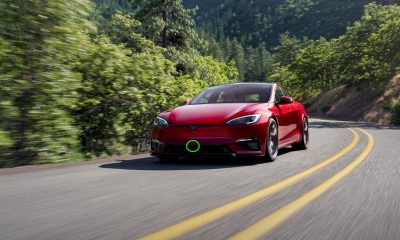
 News2 weeks ago
News2 weeks agoTesla confirms massive hardware change for autonomy improvement
-

 Elon Musk2 weeks ago
Elon Musk2 weeks agoElon Musk slams Bloomberg’s shocking xAI cash burn claims
-

 News2 weeks ago
News2 weeks agoTesla features used to flunk 16-year-old’s driver license test
-

 News2 weeks ago
News2 weeks agoTesla China roars back with highest vehicle registrations this Q2 so far
-

 News2 weeks ago
News2 weeks agoTexas lawmakers urge Tesla to delay Austin robotaxi launch to September
-

 News2 weeks ago
News2 weeks agoTesla dominates Cars.com’s Made in America Index with clean sweep
-

 News2 weeks ago
News2 weeks agoTesla’s Grok integration will be more realistic with this cool feature



























